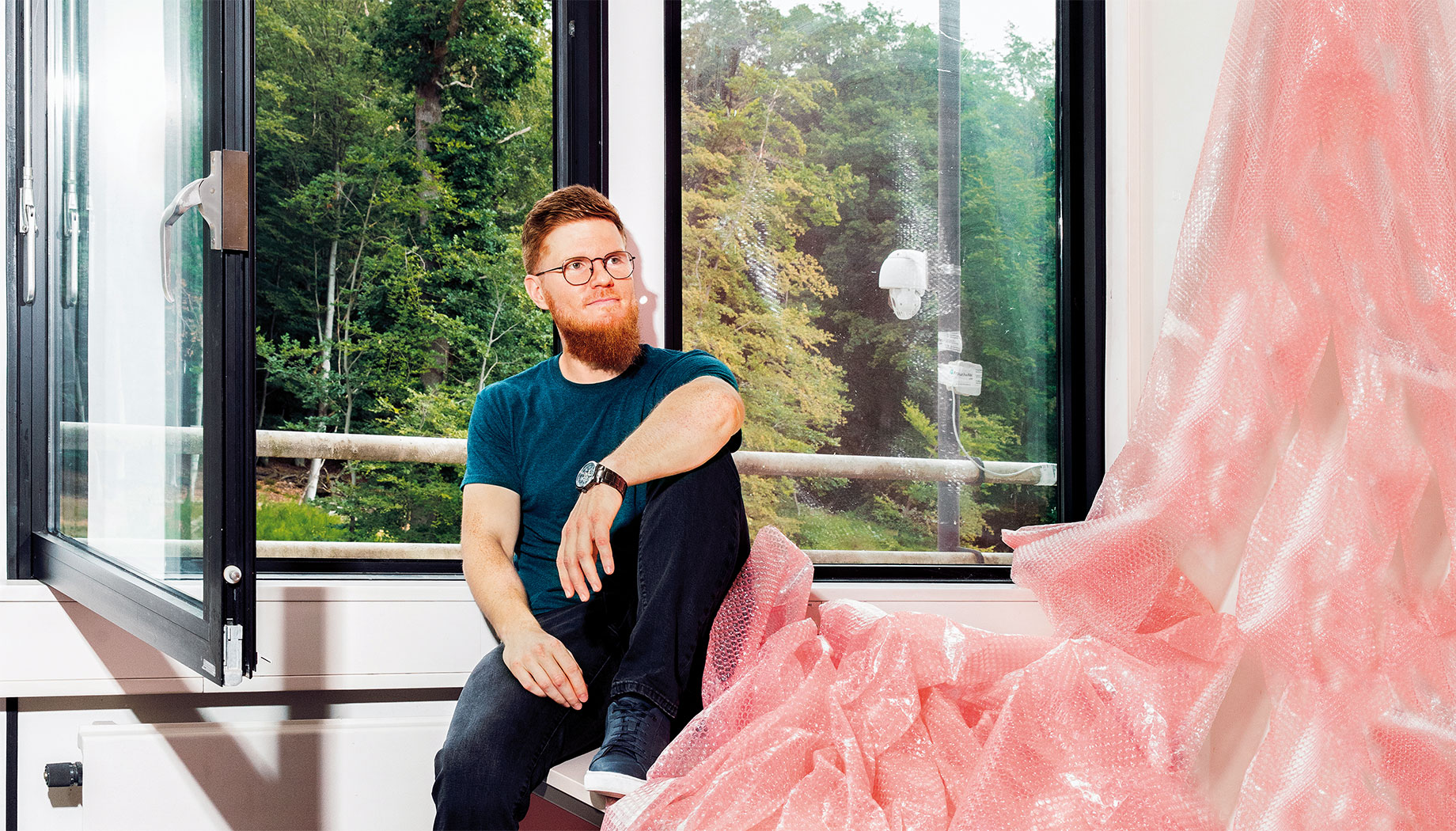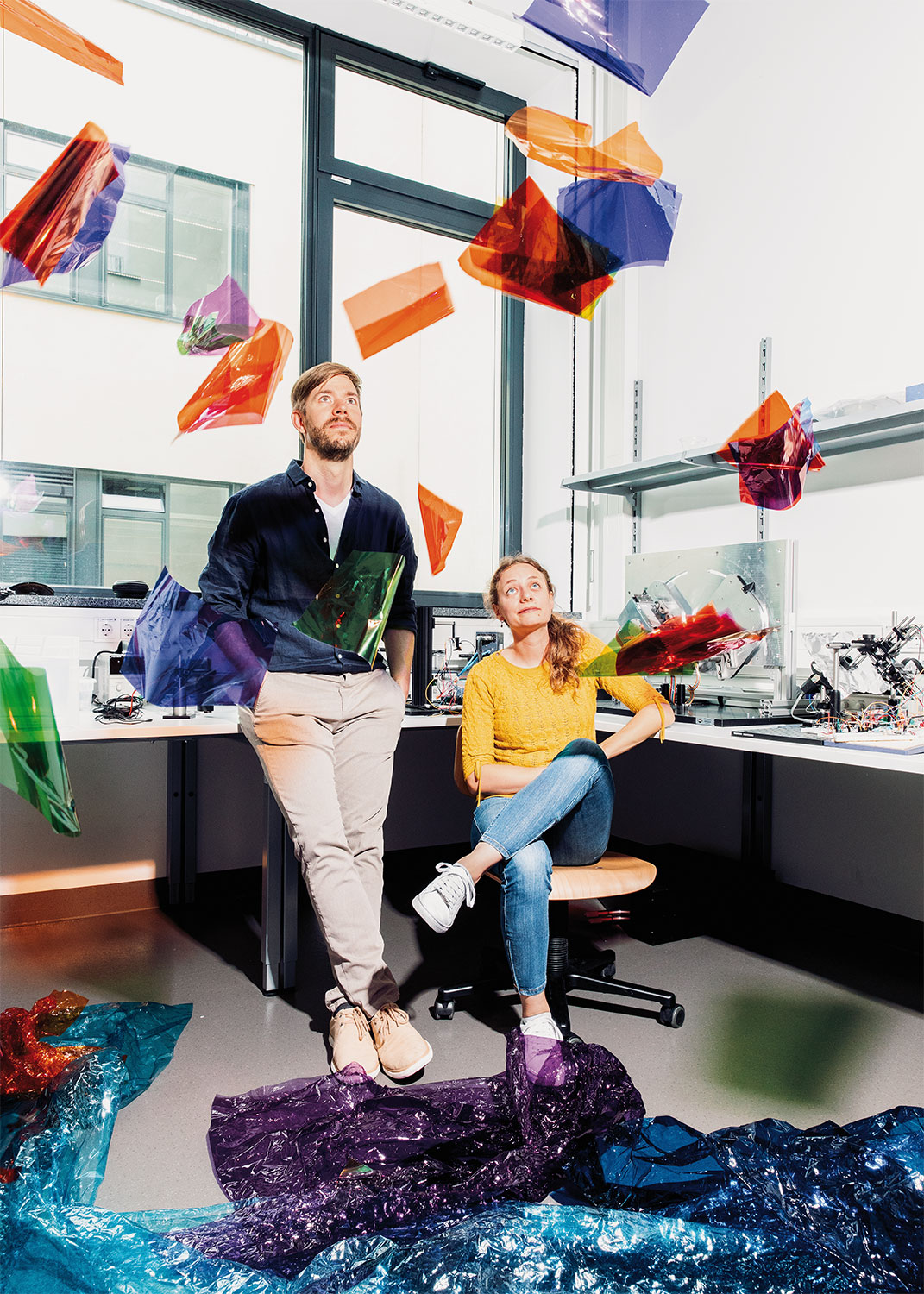Using plastics for longer
Elke Metzsch-Zilligen, head of the Additivation and Durability department at the Fraunhofer Institute for Structural Durability and System Reliability LBF in Darmstadt, is investigating which additives can be added to a plastic to improve its stability. “Heat, moisture, UV rays – they all damage the material and impair their desirable properties,” she explains. Only with the use of additives can plastics become durable enough for applications such as the electrical and automotive industries. In the Cluster of Excellence Circular Plastics Economy CCPE, six Fraunhofer institutes (including Fraunhofer LBF) have joined forces with industry partners to pave the way for a circular plastics economy. One key section of the cluster is working to better understand and control the aging and decomposition properties of plastics such as PLA. The CCPE is also focusing on developing more suitable and (ideally) biobased additives that will enable long-term use and ultimately either material recycling or a controlled biodegrading process. “The results of our research here are very encouraging,” says Ms. Metzsch-Zilligen.
Additives also play a special role when it comes to reprocessing recycled materials – for example, they can restore desired properties and distribute impurities more evenly in the mixture to avoid unsightly effects on the surface. Or they can be used to remove the frequently unpleasant odor that clings to used materials: If you have ever smelled the inside of a recycling bin, then you know what we mean. The CCPE has developed a method that uses sandwich injection molding to cover bad-smelling old material with a skin of odorless virgin plastic. Special additives in this protective skin prevent the odor being released from the core over the long term – so there is no longer any reason not to reuse this recycled plastic indoors.
The SusFireX and Bio-Flammschutz (bio flame protection) projects at Fraunhofer LBF have proven that not only plastics themselves but also additives can be made more sustainable. In these projects, researchers have developed biobased flame-retardant materials using platform chemicals from biorefineries and cellulose (from sources such as residual material flows from paper recycling). These materials help make highly flammable plastics more sustainable and safer. Up until now, the industry has depended on halogen- or phosphorus-based additives, which are primarily produced from fossil raw materials. “The flame retardants we have developed can be easily incorporated into conventional and biobased plastics,” explains Dr. Klein. And the good news does not stop there: “If we use certain combinations of biobased and conventional flame retardants, we can achieve promising results even at very low concentrations. That not only reduces the ecological footprint, but also improves the plastic’s mechanical properties.”
However, even the longest-lasting product will some day reach the end of its useful life and wind up in the trash. What should we do with this plastic, which has usually been manufactured and processed using a huge amount of energy? According to the German Environment Agency (UBA), over half (53 percent) of the plastic waste collected in 2019 was used for energy, i.e., burned in wasteto- energy plants to generate electricity and heat. Meanwhile, 46 percent went for material recycling, the goal being to turn the used plastic into material for plastic production (recycling). Just 1 percent of plastic waste is currently recycled into raw materials, i.e., broken down into basic materials such as oil and gases – a procedure that is still too complex to be financially viable.
In its waste hierarchy, the German Circular Economy Act (Kreislaufwirtschaftsgesetz, KrWG) gives top priority to the strategy of preventing waste; this involves avoiding or reusing plastic products and packaging. However, this is then followed by strategies that help optimize a proper circular economy. The basic premise here is simple: The longer we can keep plastic in circulation, the less new plastic needs to be produced. “However, this means we need to take the whole process chain into account,” explains Susanne Kroll, group manager for High-Performance Composites and Circular Economy at the Fraunhofer Institute for Machine Tools and Forming Technology IWU. Ms. Kroll is one of the coordinators of the Circular Saxony innovation cluster. Launched in 2022, this cluster aims to bring stakeholders from government, science and industry together to make production and utilization cycles more sustainable, and thus bring the circular economy from theory into practice. “Our very manufacturing processes need to be adapted to fit the concept of a circular economy,” says Ms. Kroll. This can be achieved, for example, by constructing hybrid structures that consist of different plastics and composite materials in such a way that they can be easily separated after use, which means they do not just end up being burned for energy. Consideration must also be given to how the object will be dismantled, for example, by using detachable adhesive joints. Ms. Kroll calls this approach “design for reuse, repair and recycling.”





